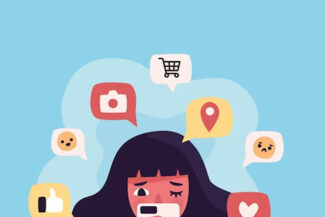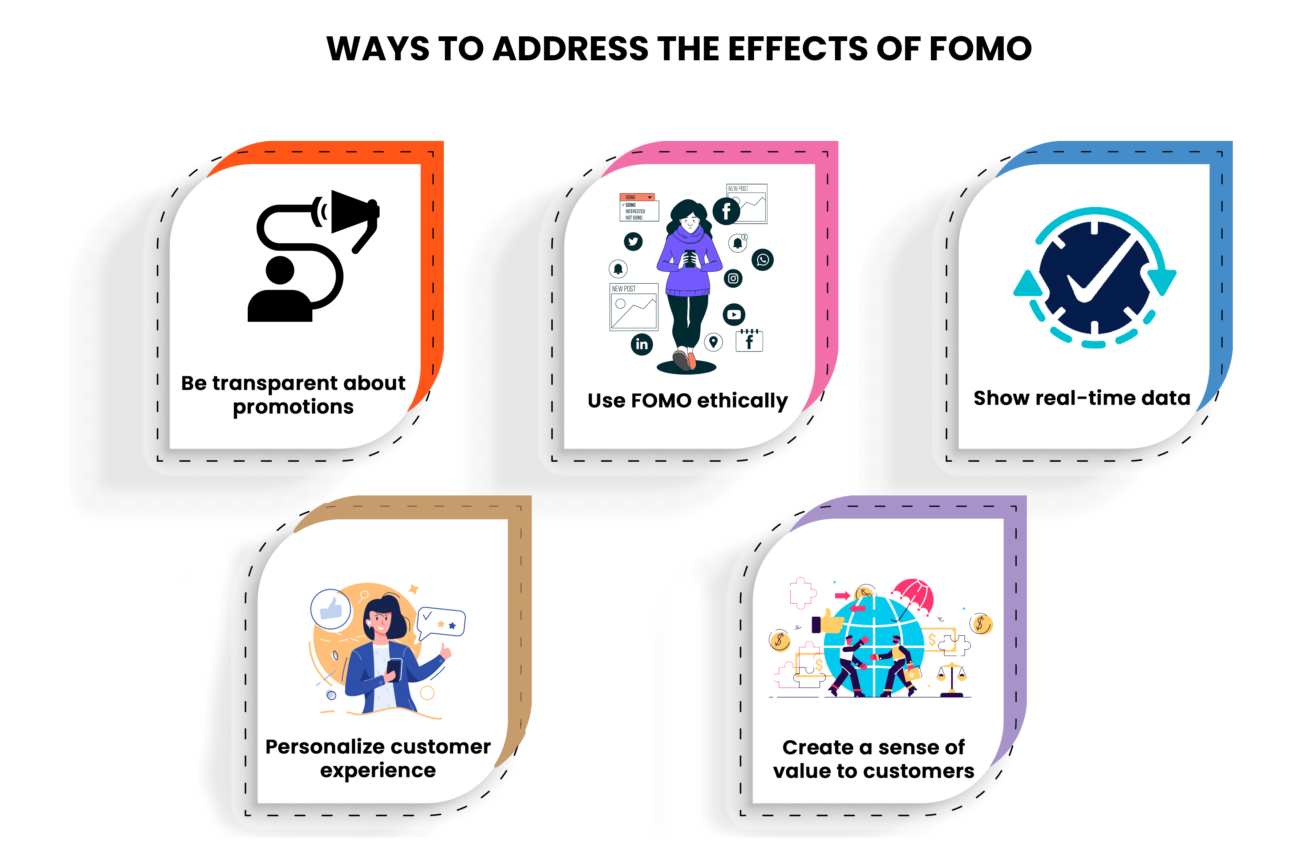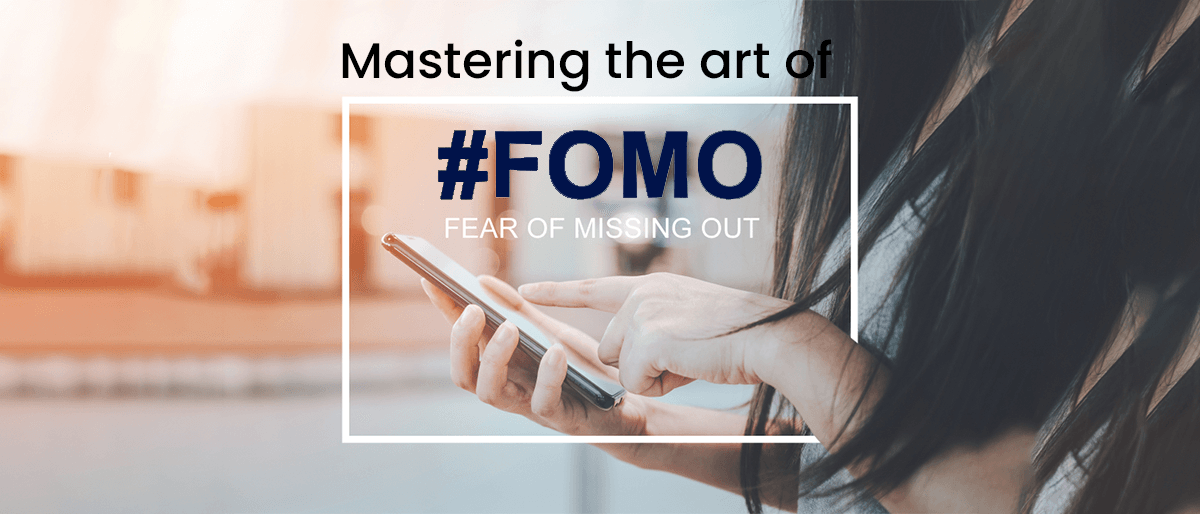Mastering the Art of FOMO: Creative Marketing Techniques
The rise of e-commerce has created a more competitive market, where businesses need to continuously innovate and offer unique products and services to stay ahead of the curve. Social media and other digital channels have made it easier for businesses to reach a larger audience and advertise their products. Consumers are bombarded with constant updates on new products and deals, leading to a sense of urgency to make purchases before they miss out on a good deal or the latest trend. This phenomenon of creating an urgency that nudges customers to make a purchase is called FOMO-based marketing.
FOMO, or the fear of missing out, is a powerful psychological force that drives people to make quick decisions, especially when it comes to shopping. In the world of ecommerce, FOMO can be a valuable tool to increase sales. It has been a powerful marketing tool for decades but in recent years it has become more prevalent because of the multiple sales channels that are available. By creating a sense of urgency and scarcity around their products, marketers can encourage shoppers to purchase before they miss out on a great deal.

The Influence of FOMO on consumer habits
In FOMO-based marketing, Brick-and-Mortar Stores use tactics like limited-time offers and exclusive deals to create a sense of urgency and scarcity. The idea is to make consumers feel like they have to act quickly or risk missing out on a great opportunity. This approach is effective, and it is commonly used in many industries, from fashion to electronics.
Online retailers use tactics like countdown timers, low-stock notifications, and product recommendations based on what other customers have purchased to create a sense of urgency and scarcity. This approach can be effective in driving sales and encouraging customers to act quickly.
Nearly 60% of e-commerce customers experience FOMO while shopping online.
Fear of missing out on a sale or a discount is the most common reason why customers make an impulsive purchase.
Studies show that, 68% of social media users have made a purchase after seeing a product on their feed.
In response to this, companies have started using social media to create FOMO-based marketing campaigns that rely on user-generated content. These campaigns often involve encouraging consumers to post pictures of themselves using the company’s products or services with a specific hashtag. This creates a sense of community and belonging around the product, and also makes other consumers feel like they are missing out if they are not part of this community.
Another way companies do FOMO-based marketing is through social media influencers. Influencers are social media personalities who have built up large followings, often by posting about their lives and experiences. Brands partner with influencers to create FOMO-based marketing campaigns that use the influencer’s credibility and popularity to generate interest in the product or service.
Creative ways to use FOMO to boost sales in your e-commerce store
Limited-time offers: One of the most effective ways to create FOMO is to offer a limited-time discount or promotion. For example, Offering a flash sale that lasts only a few hours, or a discount code that expires in 24 hours. This creates a sense of urgency and encourages shoppers to purchase before the offer ends.
Countdown timers: Timers show shoppers how much time they have left to take advantage of a special offer or sale. It’s a simple but effective way to create FOMO and encourage quick decisions.
Low stock alerts (scarcity alerts): A product that’s in high demand and selling out fast can be tagged with a low stock alert. This alert lets shoppers know that there are only a few items left, which motivates them to make a purchase before the product sells out.
Social proof: Social proof, such as the number of people who purchased a product, or live sales notifications in a store can help build credibility. When shoppers see that others are purchasing a product, they are more likely to make a purchase themselves before the product sells out.
Exclusive deals and coupons: Offering exclusive deals and coupons to email subscribers or social media followers can also create FOMO. By offering a special promotion that’s only available to a select group of people, a sense of exclusivity can be created which encourages the member’s friends and relatives to join the group.
Loyalty Programs: Offering VIP access to limited edition products and special loyalty points for each purchase to club members drives non-members to enroll for loyalty or club membership. This can be a strategy to encourage repeat purchases and build brand loyalty.
Bundles and packages: By offering a bundle or combo of products at a discounted price that’s only available for a short period of time, a sense of value and urgency can be created which motivates shoppers to make a purchase.
Upsells and cross-sells: By offering related products or product upgrades at checkout, a sense of urgency can be created which encourages shoppers to add these items to their cart before checking out.
Use Gamification: Gamification can be a fun and engaging way to create FOMO. By turning the marketing content into a game, customers can be encouraged to engage with the brand, know about it and compete with other customers for prizes or rewards. This could be a contest, a quiz, a lucky draw, or a scavenger hunt.
User-generated content: Customers can be encouraged to share their experiences about a brand’s products or services on social media, and then their posts can be featured on the store’s website or social media channels. This can show potential customers that others are using and enjoying the products or services.
Free trials or samples: Free trials or samples of products or services can be offered to potential customers. This can create a sense of FOMO by giving customers a taste of what they could be missing out on if they don’t make a purchase.
Social media contests: Hosting a social media contest where customers can win prizes by sharing a brand’s content and tagging their friends is also a way to create FOMO. This can create a sense of excitement and encourage new customers to engage with a brand.
A critical look at FOMO
FOMO can be beneficial for businesses, as it can drive sales and increase customer engagement. However, it can also have negative consequences if not addressed properly. The below points are crucial to the success of FOMO-based marketing.
- With the constant influx of information and deals, consumers may feel pressured to make quick decisions on purchases. This can lead to impulsive buying, which can be detrimental to the consumer’s finances in the long run.
- FOMO has created a more competitive e-commerce industry, where businesses need to constantly innovate and offer unique products to stay ahead of the curve. This can be challenging for smaller businesses with limited resources.
- With so many options available, consumers may not be as loyal to one brand as they were in the past. This can be problematic for e-commerce businesses that rely on repeat customers.
So, what can e-commerce businesses do to address these issues?
- E-commerce businesses should be transparent about their promotions and deals, including the duration of the offer and any restrictions that may apply. This can help alleviate the pressure and give consumers the real-time information they need to make informed purchasing decisions.
- It is important to use FOMO tactics ethically and avoid creating false scarcity or manipulating customers into making purchases.
- Social proof can be a powerful motivator for FOMO. By featuring customer reviews, ratings, or testimonials on the website or social media channels, a small business shows potential customers how popular and in-demand their product or service is.
- E-commerce businesses can stand out from the crowd by creating a personalized experience for their customers. This can include offering unique products and customized product recommendations on the checkout page based on previous purchases and personalized post-purchase services. This can be a strategy to build brand loyalty and encourage repeat purchases.
- It is important to make sure that customers feel that they are getting value from their purchase which would encourage them to stay loyal to the brand.

While FOMO is a form of fear, there are many emotions like happiness, trust, empathy, nostalgia, and other forms of fear that marketers use in addition to or along with FOMO to appeal to consumers and emphasize the need to purchase their product. The most effective emotions will depend on the brand, the product or service being sold, and the target audience. By understanding the needs and desires of the target audience, marketers can tailor their FOMO marketing and messages to create a sense of relevance and make potential customers feel like their product or service is exactly what they’ve been looking for.
FOMO-based marketing has been and will continue to be a powerful strategy for decades to come. While it can be effective in generating excitement and driving sales, brands need to be careful to use this approach ethically and not create a negative impact on consumers.
Encomm Nudge uses both social proof and FOMO to create campaigns. Encomm nudge sales notification pop-ups and product interest campaigns can effectively build credibility, convert visitors into customers, improve sales and increase revenue.
Studies show that, FOMO can increase click-through rates by 22% , and conversion rates by 40%.
FOMO can be amplified through social proof, with 84% of consumers saying that they are more likely to make a purchase if they see positive activity and user-generated content about a product.
With the Encomm Nudge app, you can display sales notification pop-ups about recent sales to your customers, signaling that your store is active and sales are happening. This feature helps to build trust in your business.
With the Encomm Nudge app, you can display product interest signals about the number of times a product has been viewed, sold, and added to cart. These signals create FOMO and drive the customers to act quickly.
Encomm Nudge allows merchants to create & customize campaigns, analyze the impressions & engagements through the dashboard, make informed decisions and increase conversion.

